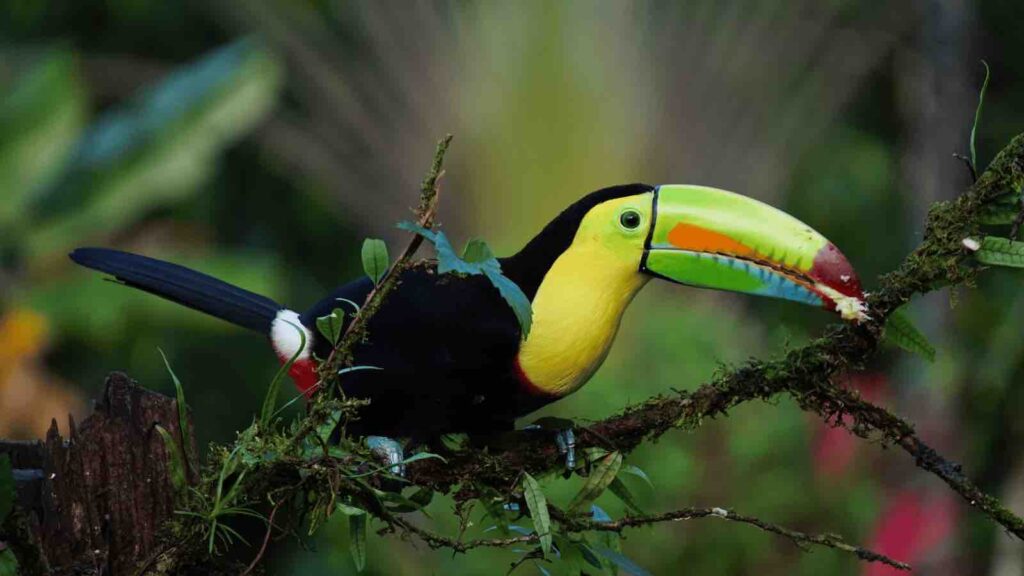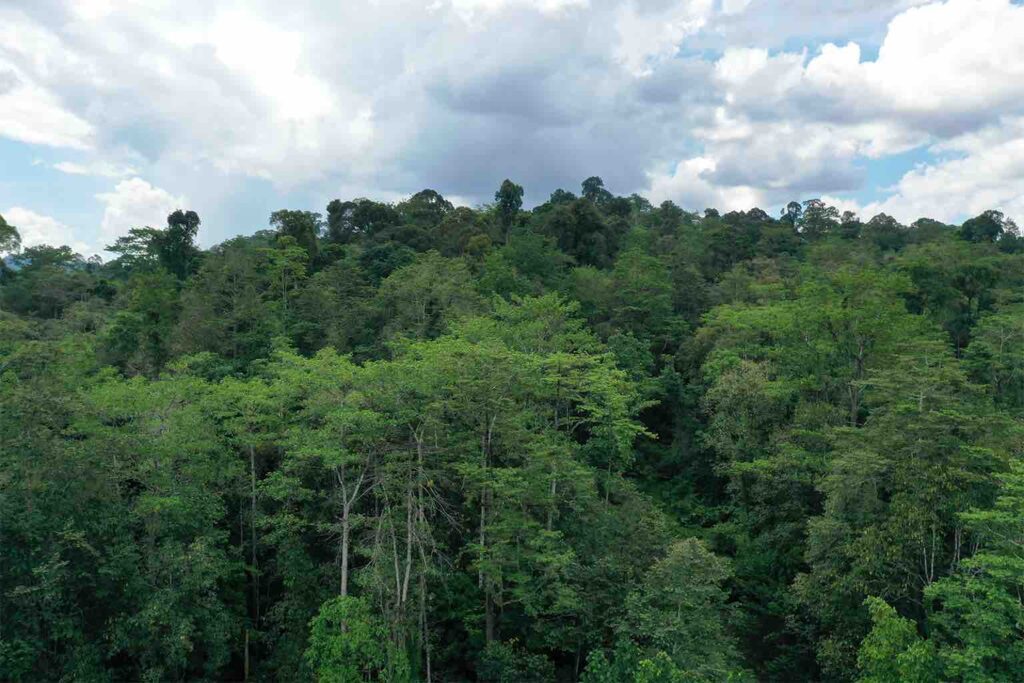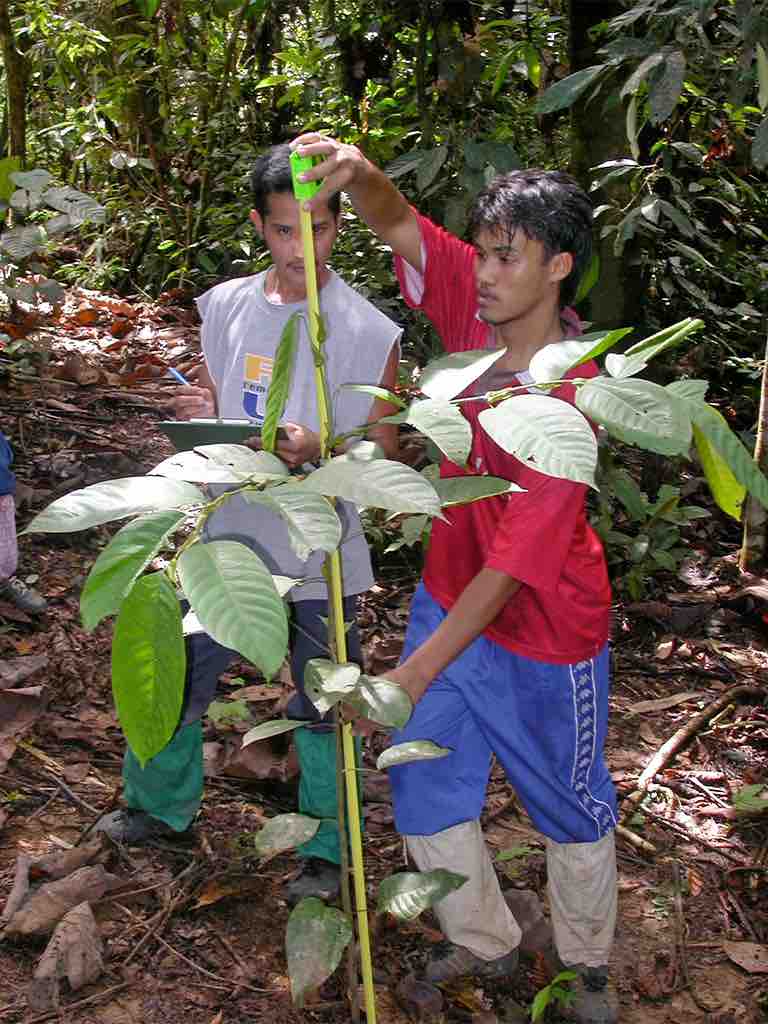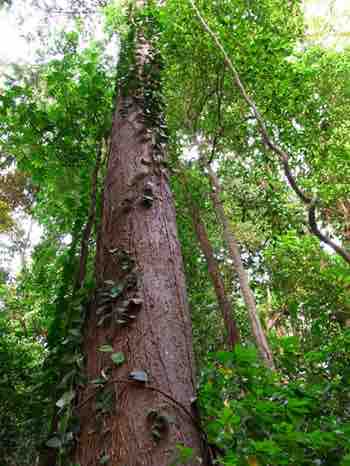In the vibrant heart of Sabah, Malaysian Borneo, a groundbreaking experiment unfolds, revealing that with a human touch, the restoration of logged forests can be significantly accelerated.
A two-decade experiment in the tropical rainforest of Sabah, Malaysian Borneo, begins to yield fascinating results, reinforcing the potential of human-assisted restoration in accelerating the recovery of logged forests.
RELEVANT SUSTAINABLE GOALS


Seeds Of Change
The study, meticulously conducted in the dense expanse of Sabah, discerns the ripple effect of planting an array of diverse seedlings in comparison to a singular species. Remarkably, within a span of a decade, areas with varied seedlings exhibited not only heightened biomass but also a leap in forest complexity, creating a vibrant tapestry of an ecosystem pulsating with life.
Researchers deployed in this experiential endeavor observed that such diversity in forest species, particularly during restoration processes, significantly enhances ecosystem services, potentially marking an uptick in carbon sequestration.
This unique experiment casts its focus on hardwood tropical species from the Dipterocarpaceae family, predominantly scattered across the Southeast Asian region. These specific species might have a unique life cycle contributing to heightened diversity, although researchers advocate for further studies to affirm this theory.
Embarking on their journey in 2002, three researchers nurtured a vision to delve deep into the correlation between tree diversity and lowland rainforest restoration. Their research canvas spanned across 500 hectares within the Malua Forest Reserve in Sabah. This extensive area, divided into 124 blocks, underwent varying treatments. While some blocks were left undisturbed, allowing nature to weave its magic, others saw the planting of either a single tree species or multiple, ranging from four to sixteen species.
Biodiversity Matters
Named the Sabah Biodiversity Experiment (SBE), this extensive study sought to comprehend the visual and ecological transformation over decades due to the initial number of species planted. According to Ryan Veryard, a Ph.D. researcher at the University of Oxford and lead author of the study, areas left to natural regeneration were challenging to navigate due to dense, thorny shrubs and low-level vegetation.
Contrastingly, replanted areas, especially those with up to sixteen species, showcased minimal low-level vegetation, with the environment closely mirroring an old-growth forest characterized by its sparse underbrush and towering canopies.
Measuring Forest Complexity
Through the use of RapidEye satellite observations, the research team discerned that the human-planted blocks exhibited characteristics akin to tropical forests, especially those initiated with 1,300 Dipterocarp saplings. Furthermore, blocks infused with varied Dipterocarp species demonstrated superior biomass and canopy cover.
The team quantified their results, noting that with every doubling of Dipterocarp species planted, the block’s biomass witnessed an increment, indicating that diverse blocks potentially stored more carbon, thereby supporting the argument for greater biodiversity enhancing carbon sequestration.
Veryard articulates that diverse tree species occupy different ecological niches, reducing competition and promoting co-existence and flourishing diversity. This diversity not only leads to a robust ecosystem but also attracts a range of wildlife, contributing to a vibrant, renewed forest.
The Dipterocarps, dominant in Sabah’s rainforests, possess unique reproductive characteristics, with irregular “masting” events and limited seed dispersal. This particular biology might suggest that human-assisted reforestation could be pivotal in replenishing the Dipterocarps in logged forests, providing an initial boost necessary for the ecosystem’s long-term recovery and vitality.
Andy Hector, an ecologist at the University of Oxford and one of the SBE’s architects, indicates that there’s more to unveil about the transformation of these forests. With ambitious plans to re-census the planted trees and utilize a range of remote sensing data, the team, in collaboration with the South East Asia Rainforest Research Partnership and with funding from the Natural Environment Research Council, is poised to uncover the nuanced changes and adaptations within this lush canvas of biodiversity over the coming decades.
In a world grappling with environmental degradation, this experiment lights up the path of possibilities, indicating that with thoughtful human intervention, the symphony of life within these green expanses can not only be preserved but can also thrive, crafting a legacy of biodiversity and ecological resilience for future generations.
Lead image courtesy of Fintanobrien from pixabay
You may also be interested in :
For Every Newborn in Sikkim, 100 Trees Stand Tall : A Climate Strategy Revolutionizing Conservation





